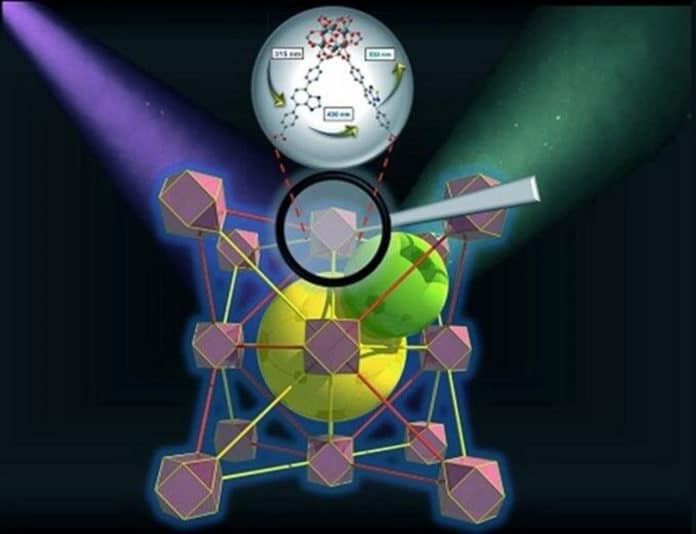Metal-organic frameworks (MOFs) are organic-inorganic hybrid crystalline porous materials comprised of a regular array of positively charged metal particles encompassed by natural ‘linker’ molecules. The metal ions structure hubs that predicament the arms of the linkers together to form a repeating, cage-like structure. Because of this hollow structure, MOFs have an extraordinarily large internal surface area.
MOFs are especially versatile materials since scientists can easily design and tweak their properties by changing the linkers or nodes. MOFs are as of now being researched as catalysts and for use in applications, for example, gas separation, sensing, and storage.
A new MOF developed at KAUST resembles a crucial energy transfer step in photosynthesis. Scientists have developed a new spin on organic metal frameworks (MOFs) that could help solar cells to gather more energy from the Sun.
The light yellow MOF crystals contain 12-coordinated zirconium-based clusters and two distinctive organic linkers: a benzimidazole molecule (BI), and a thiadiazole called TD. The two linkers were structured not exclusively to have comparable size and shape, however in particular, to have very strong spectral overlap, a key component for the effective energy transfer process.
When scientists shone ultraviolet light with a wavelength of 315 nanometers at the MOF, they noticed- its BI linker absorbed the light and then quickly emitted the energy at a longer wavelength of 430 nanometers, corresponding to blue light. The TD linker efficiently absorbed this blue light and re-emitted the energy as green light with a wavelength of 530 nanometers.
Scientists monitored the energy transfer process using a technique called time-correlated single-photon counting, which can track the emission of light over incredibly brief timescales. This revealed that the two linkers’ energy transfer process took roughly 100 picoseconds or one hundred trillionths of a second.
Team member Jiangtao Jia of KAUST’s Advanced Membranes and Porous Materials Center said, “It is challenging to design and synthesize such a light-harvesting system and observe this fast energy transfer phenomenon.”
Team member Luis Gutieŕrez-Arzaluz said, “Thanks to KAUST’s strong research infrastructure, we have one of the best facilities in the world to determine the photoluminescence lifetime to the picosecond timescale.”
This enabled the team to ascertain that the energy transfer process had an efficiency of over 90 percent, making it one of the most efficient energy-transfer MOFs to date.
Jia said, “In the future, this deliberate control at the molecular level could pave the way for the design of highly efficient artificial photosynthesis systems based on MOF materials.”
Journal Reference:
- Jiangtao Jia et al. Access to Highly Efficient Energy Transfer in Metal-Organic Frameworks via Mixed Linkers Approach, Journal of the American Chemical Society (2020). DOI: 10.1021/jacs.0c02007
